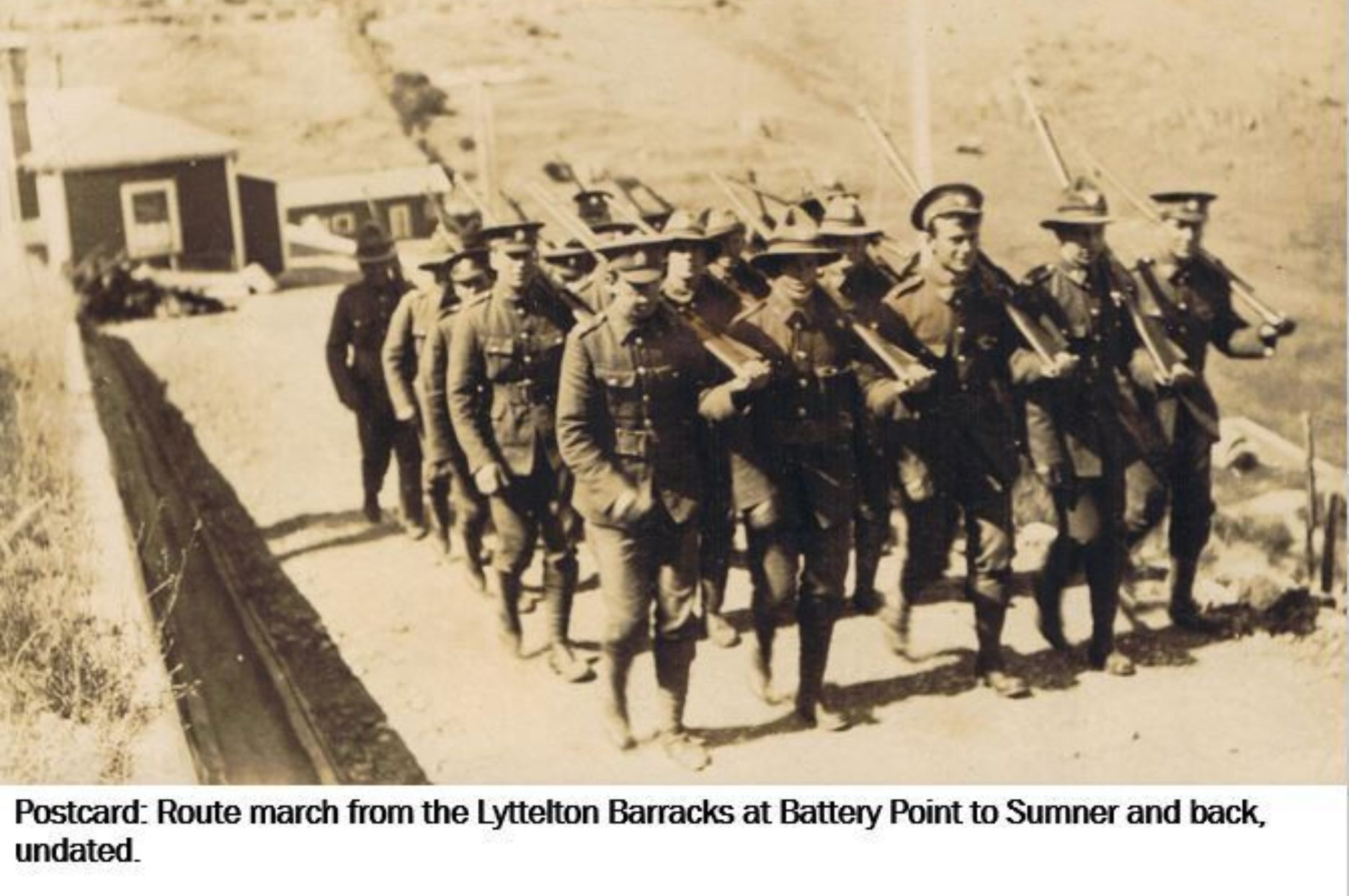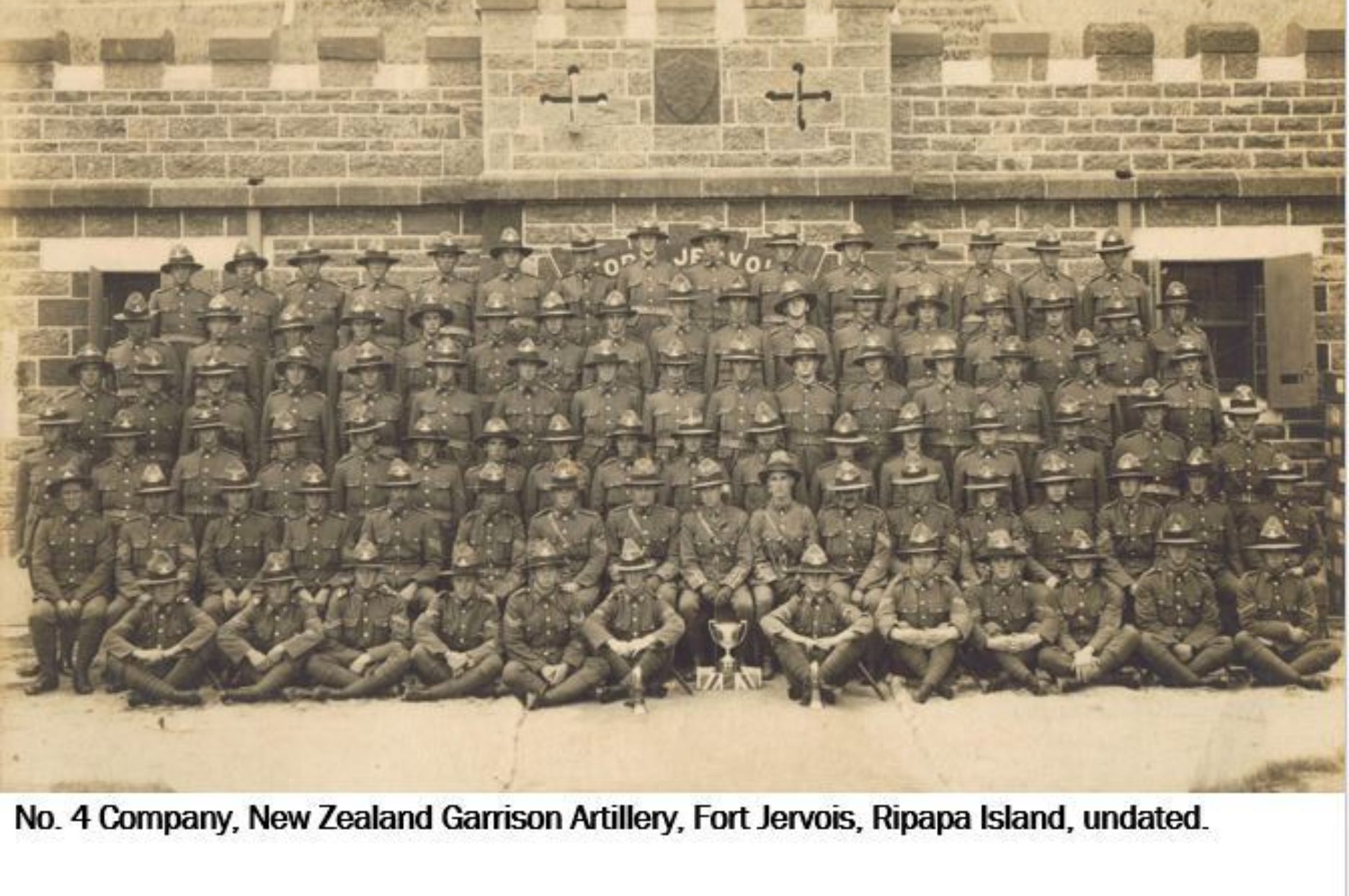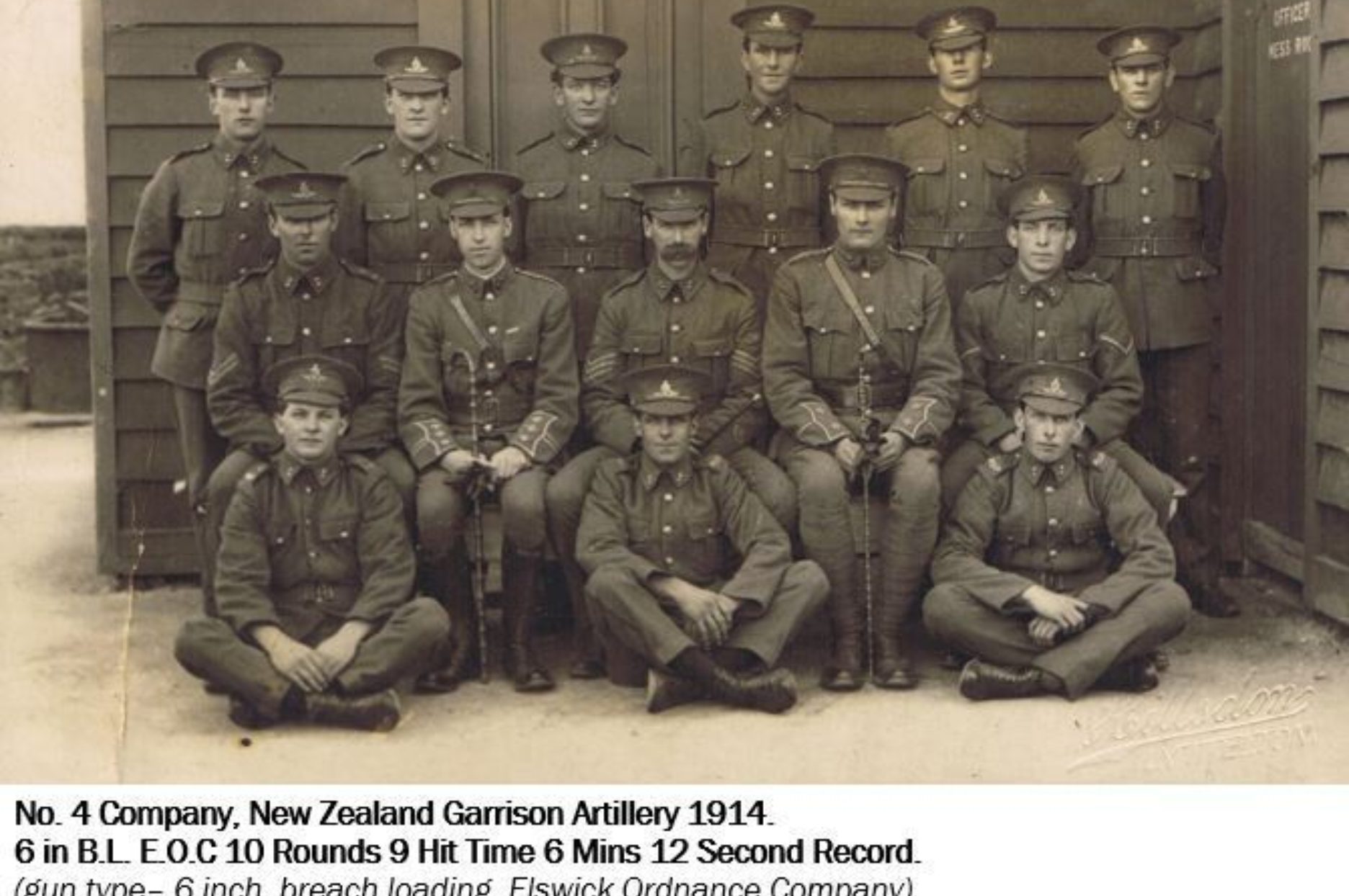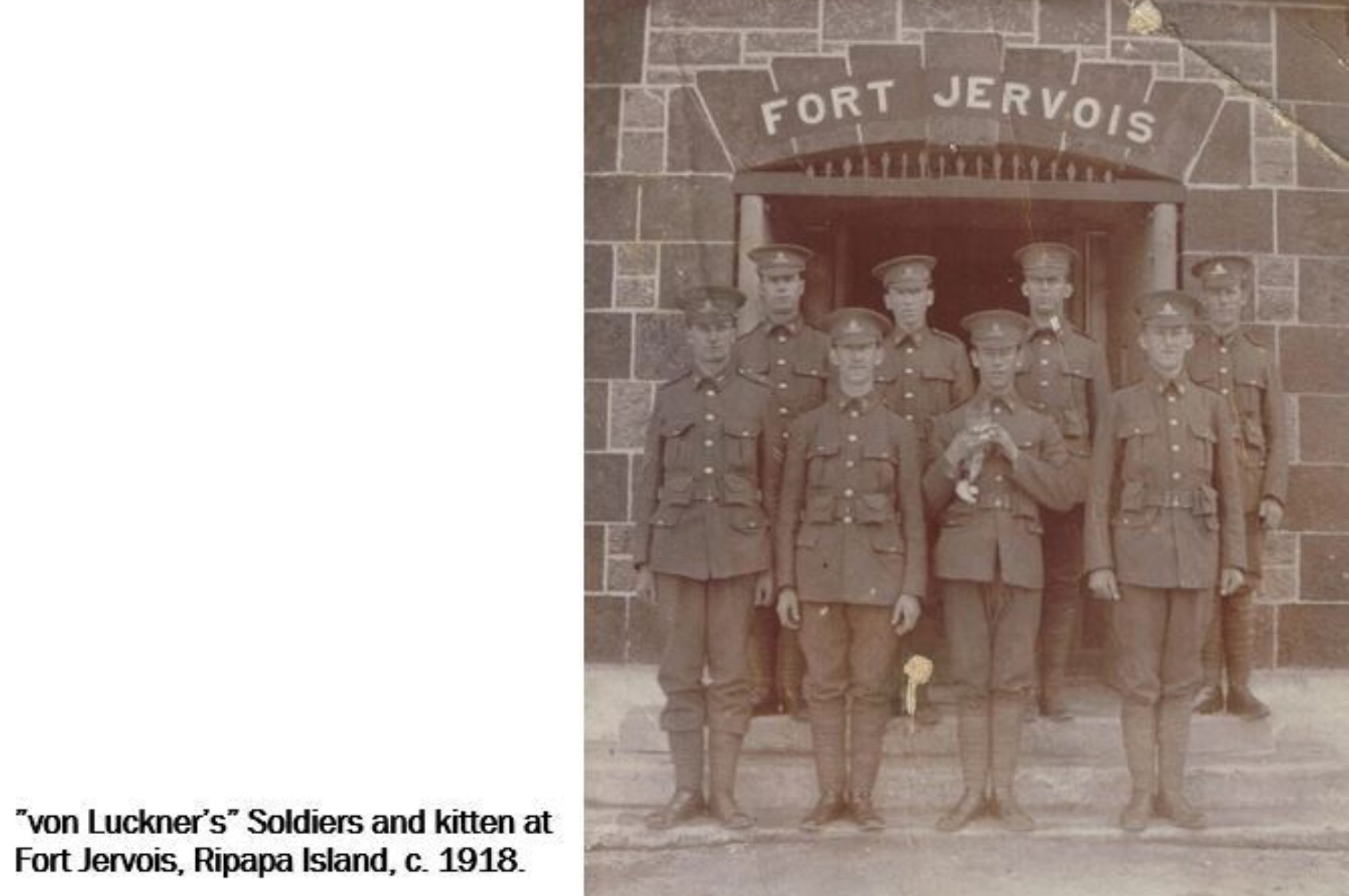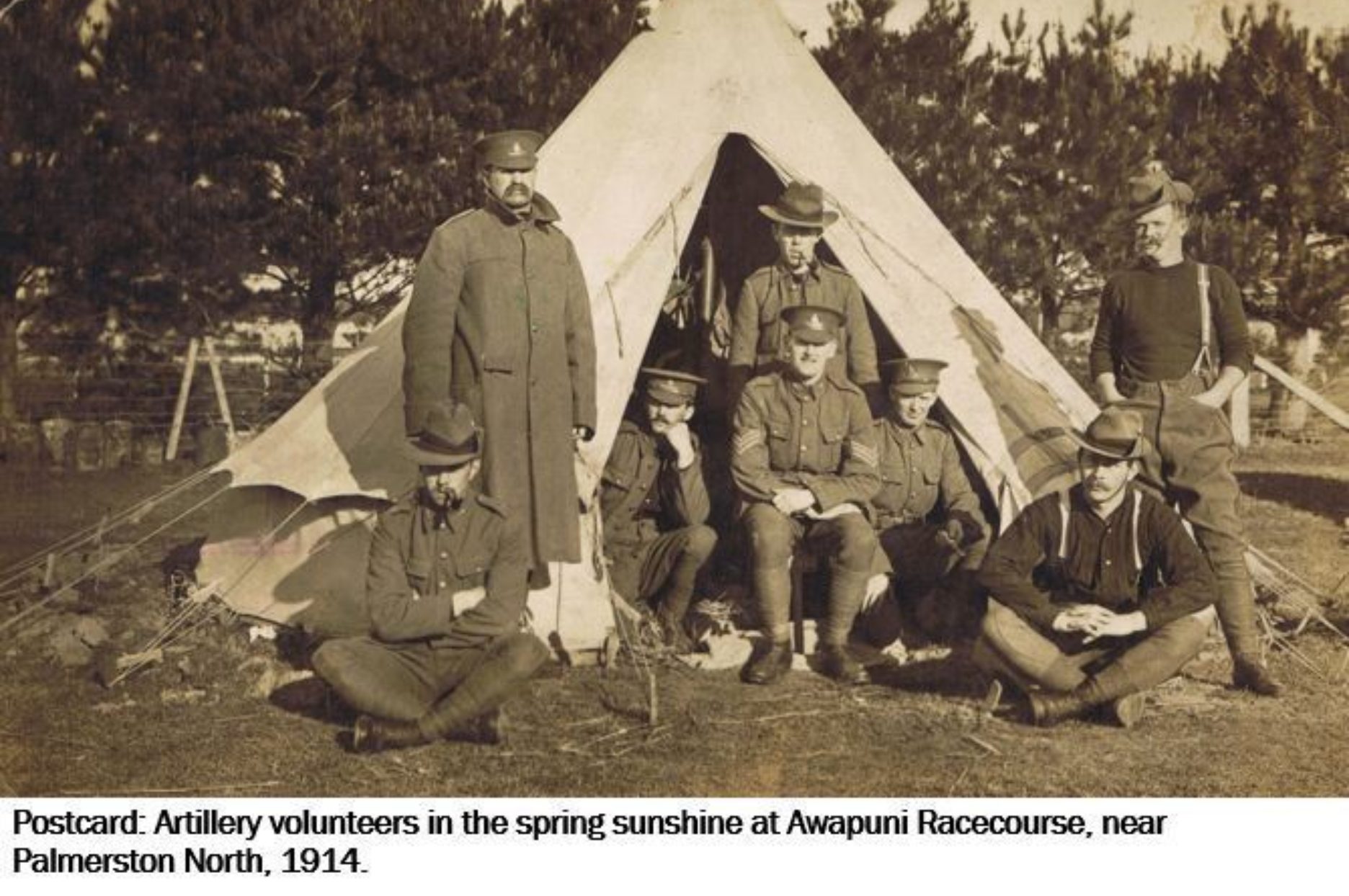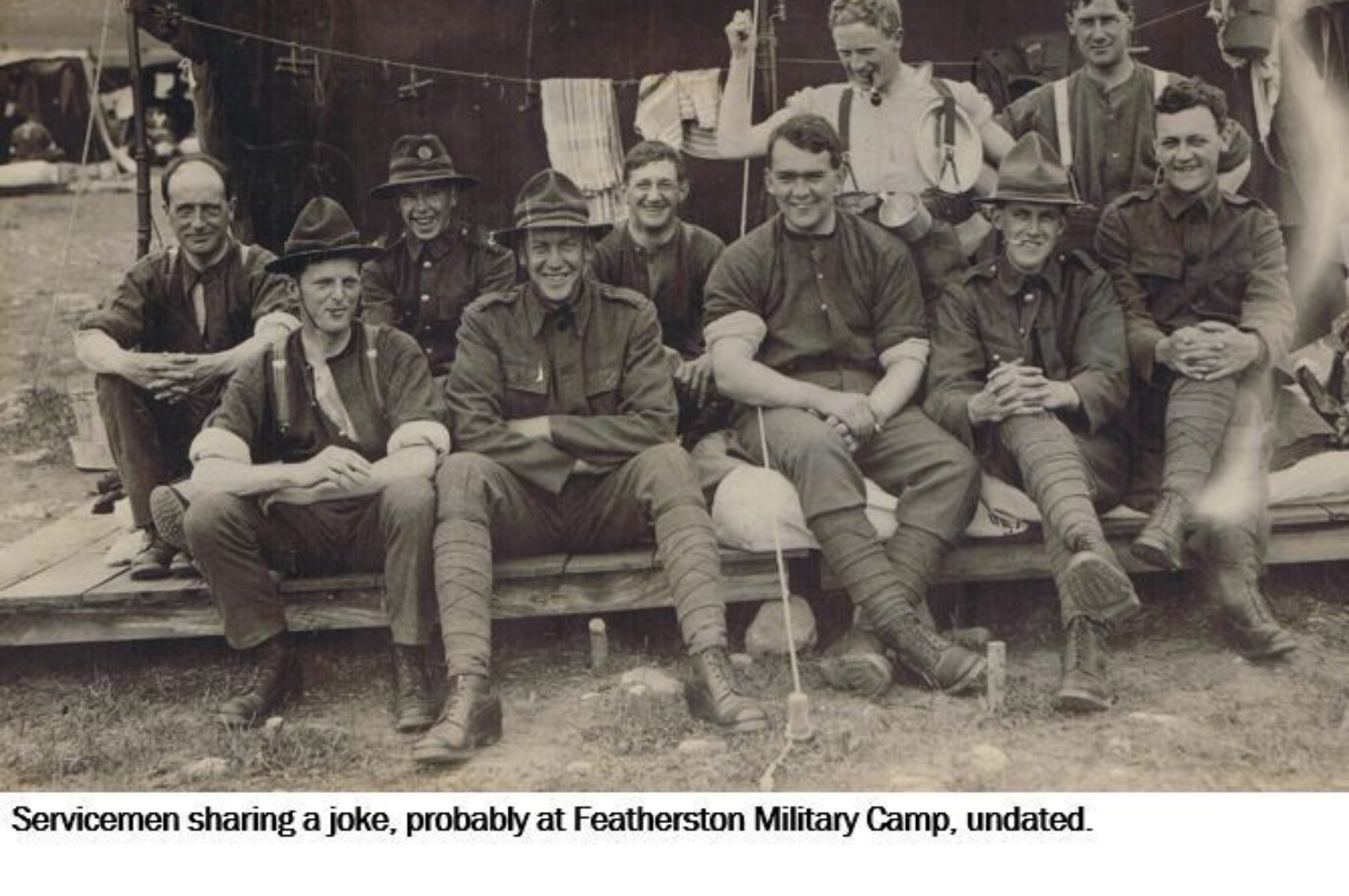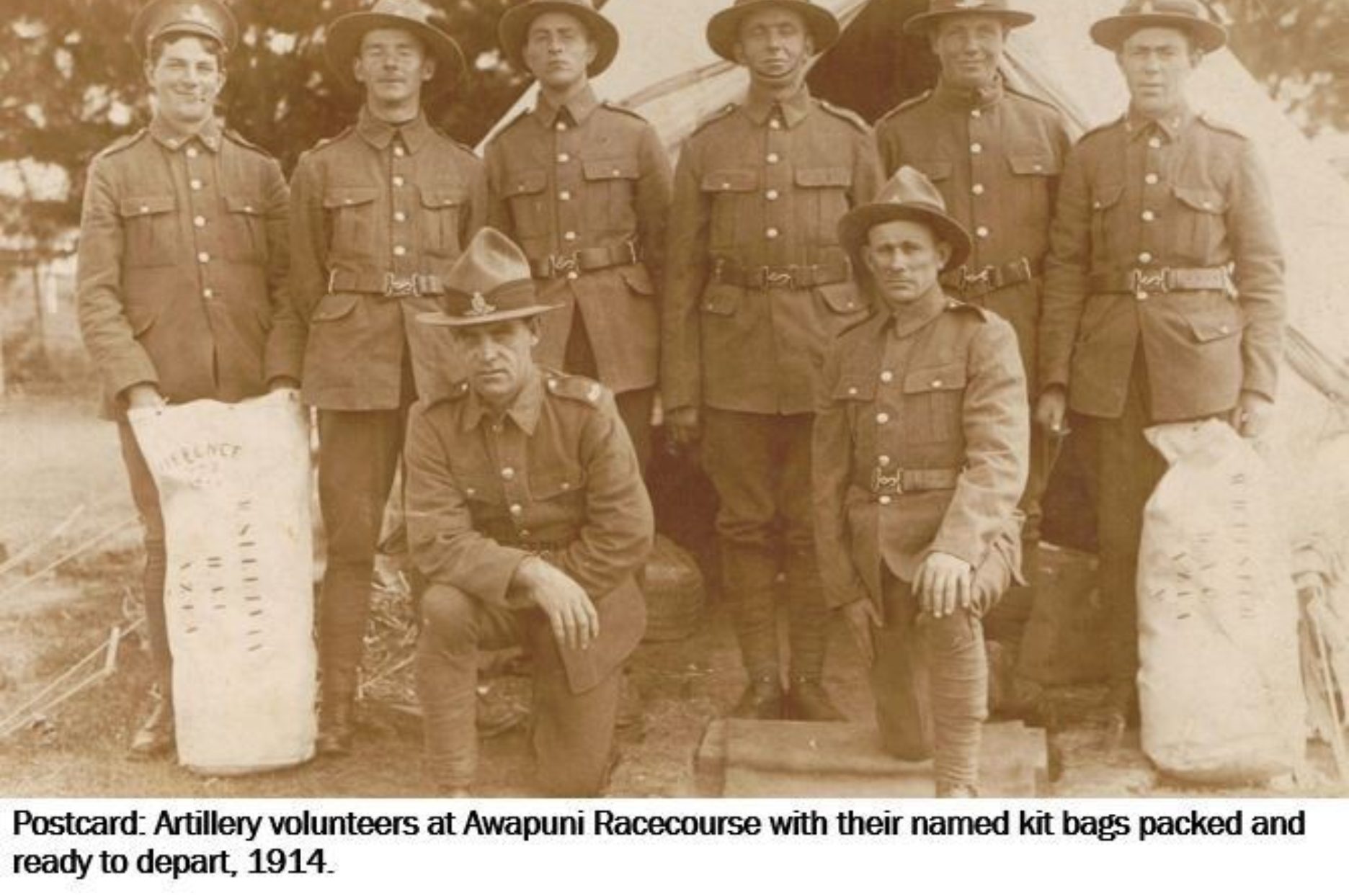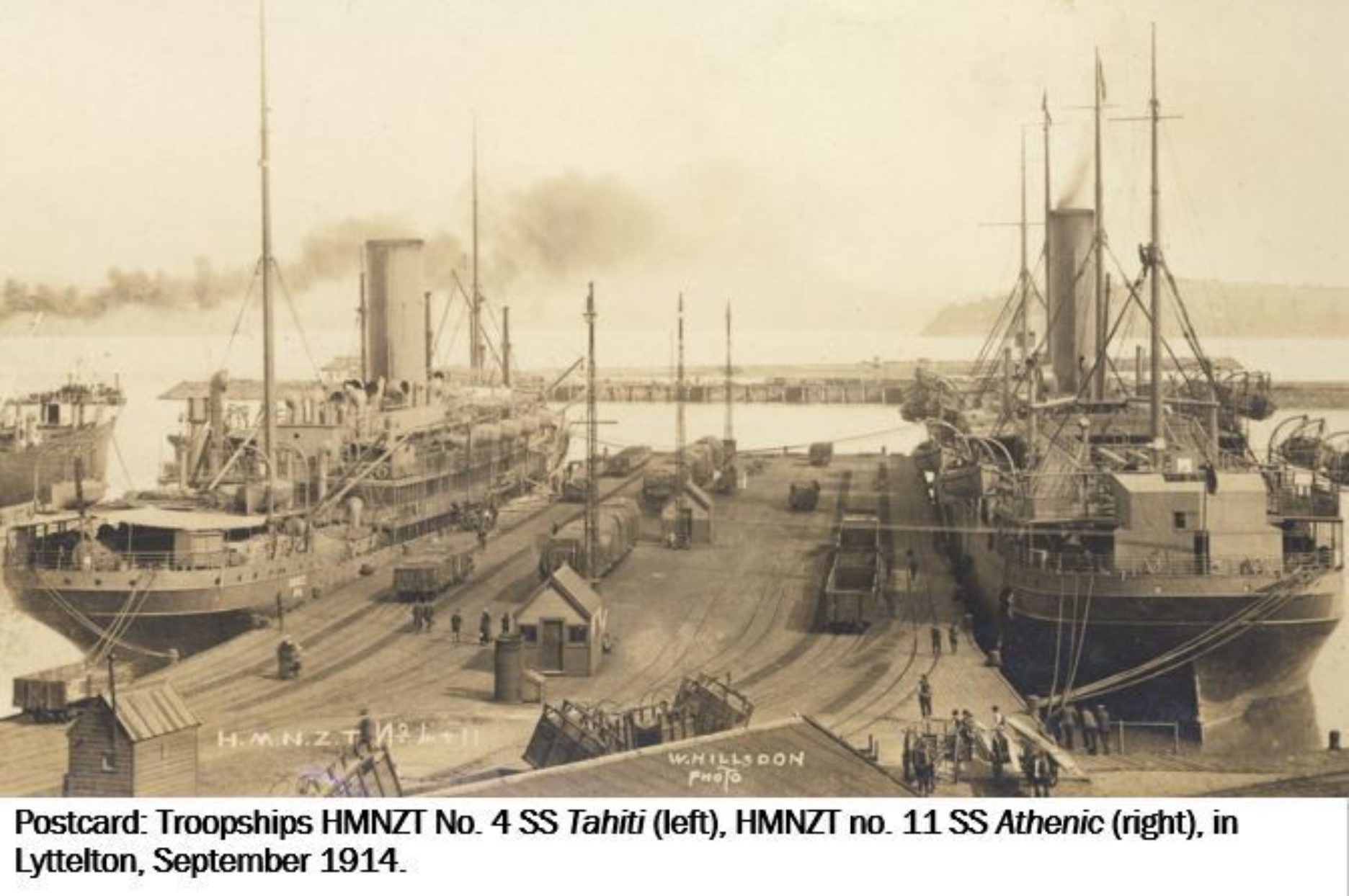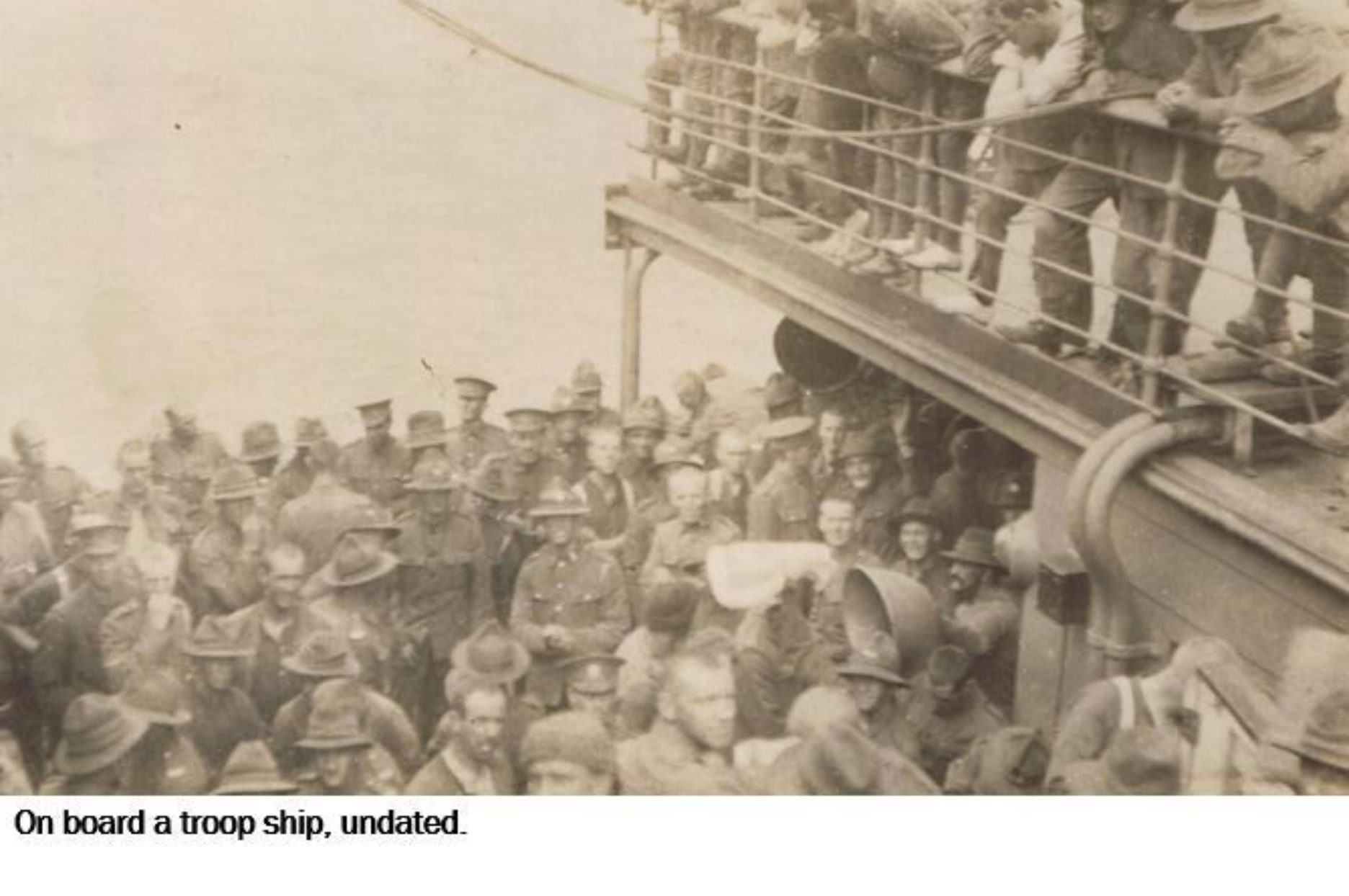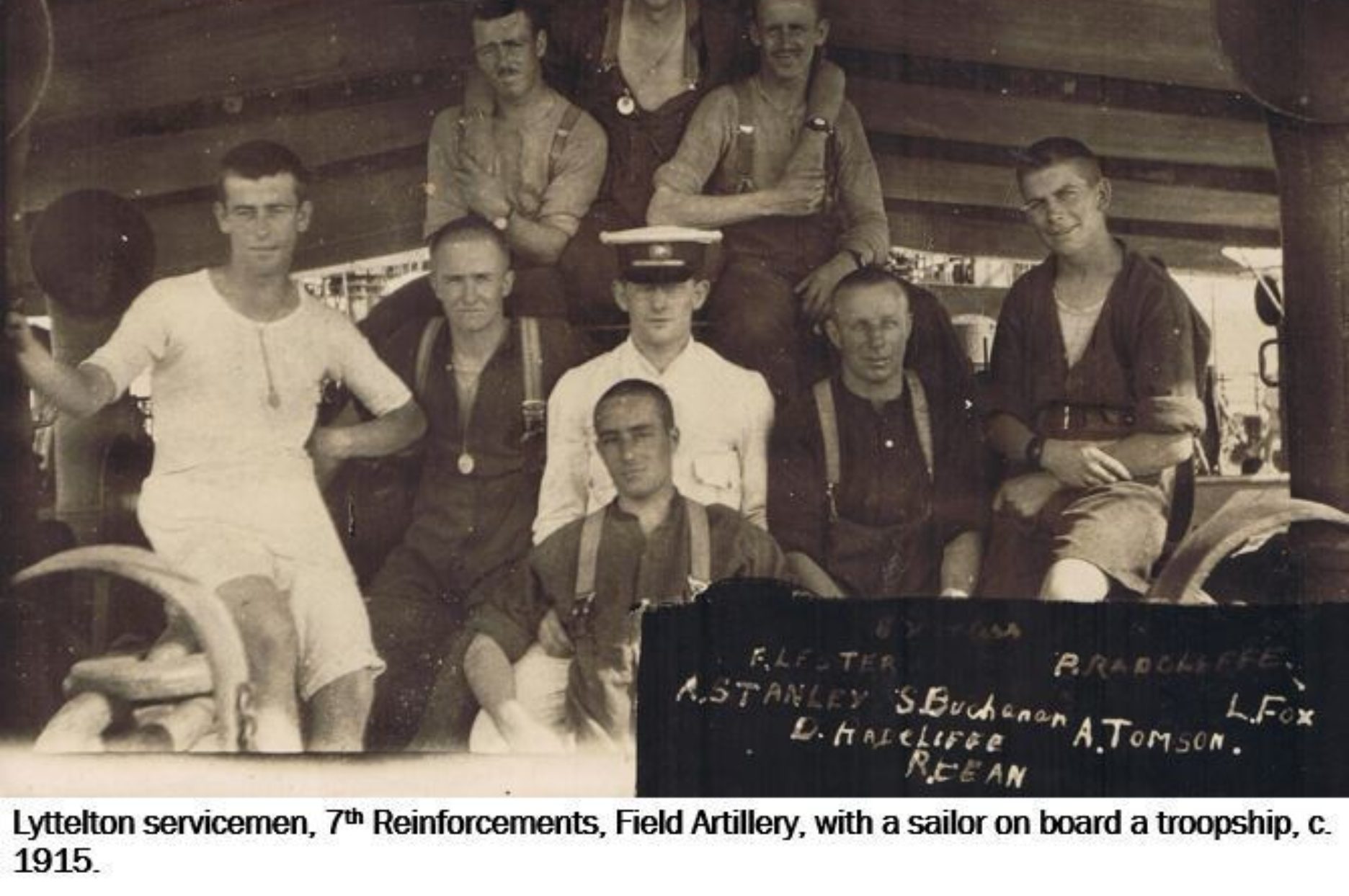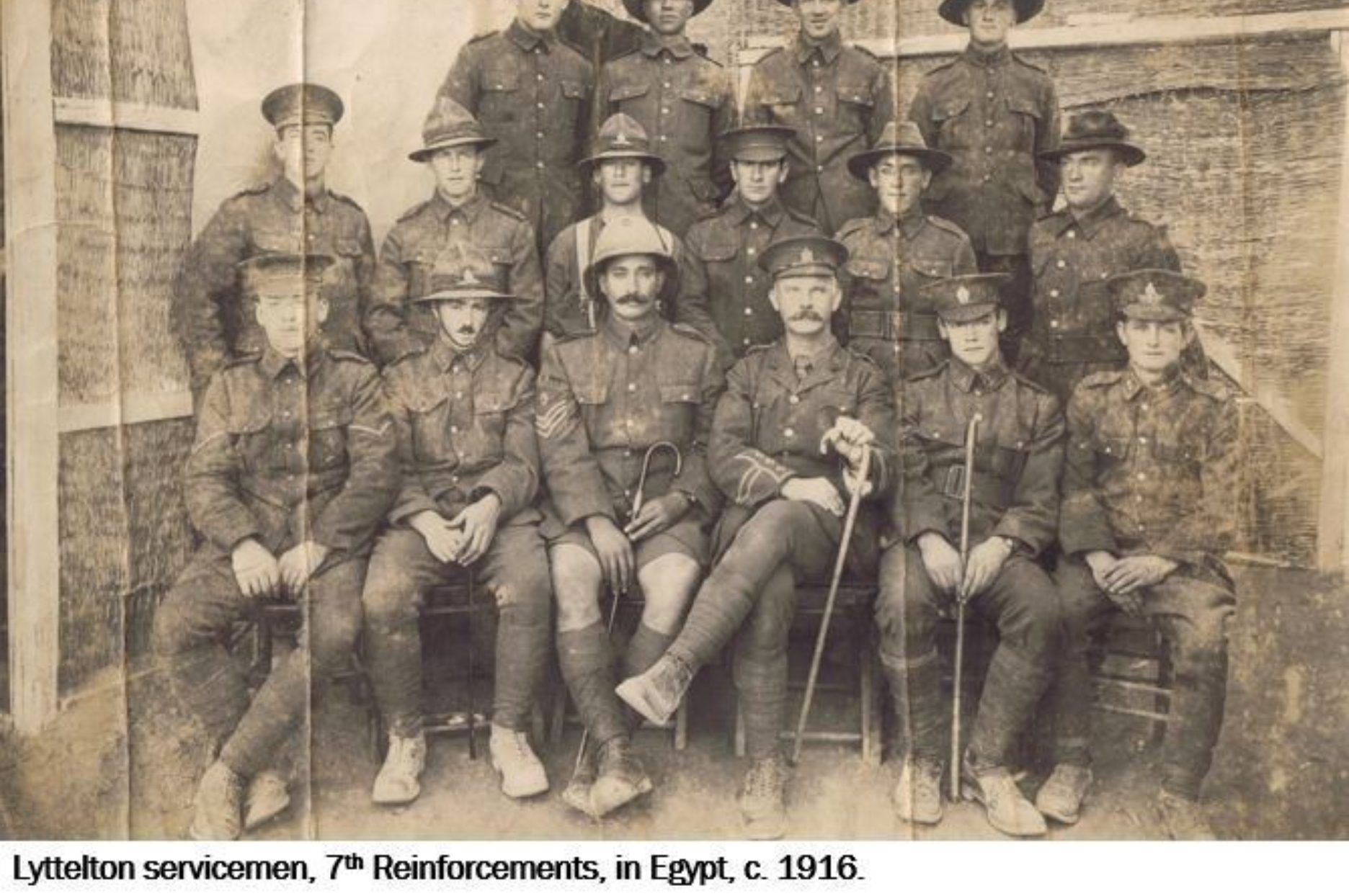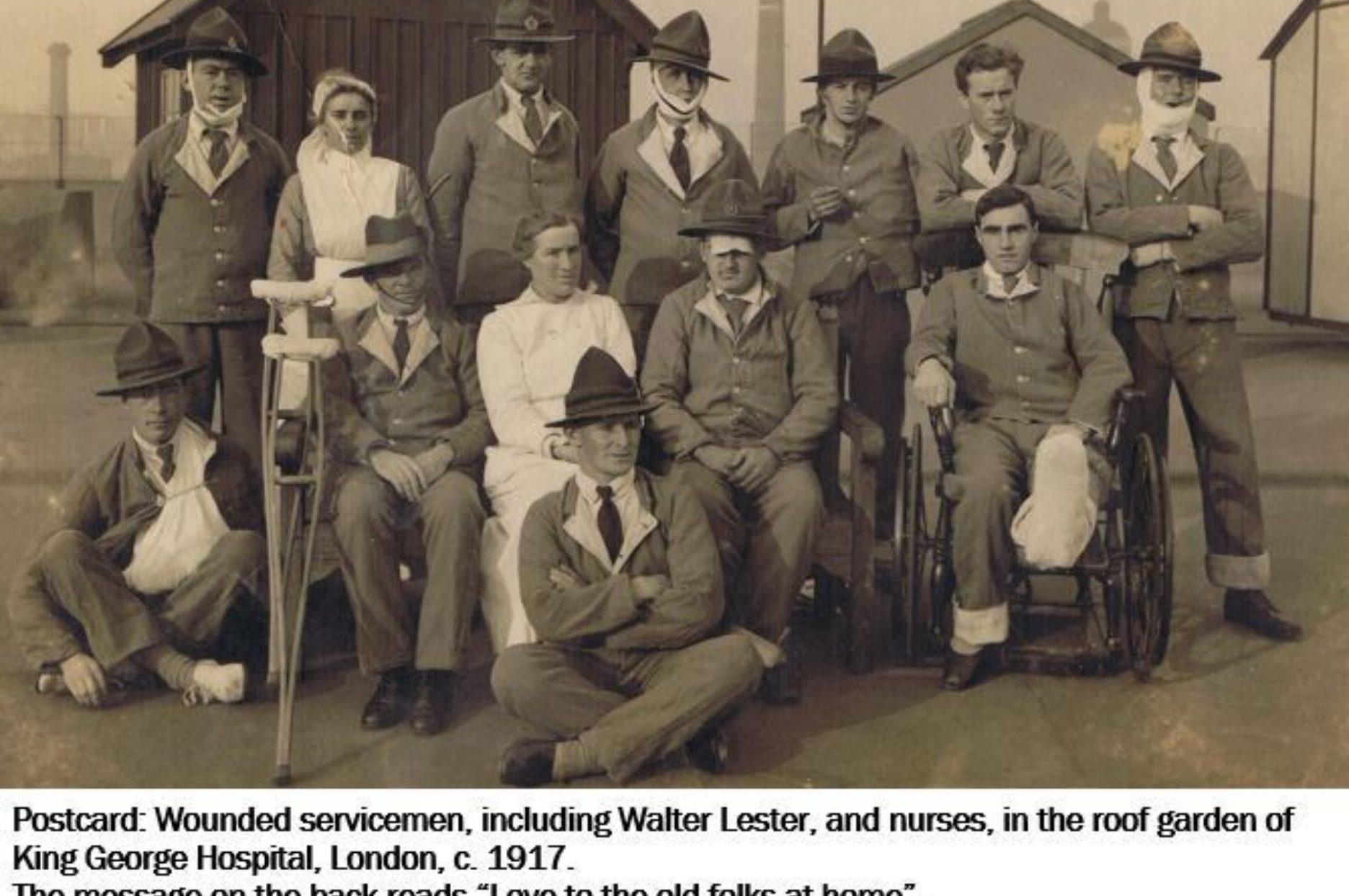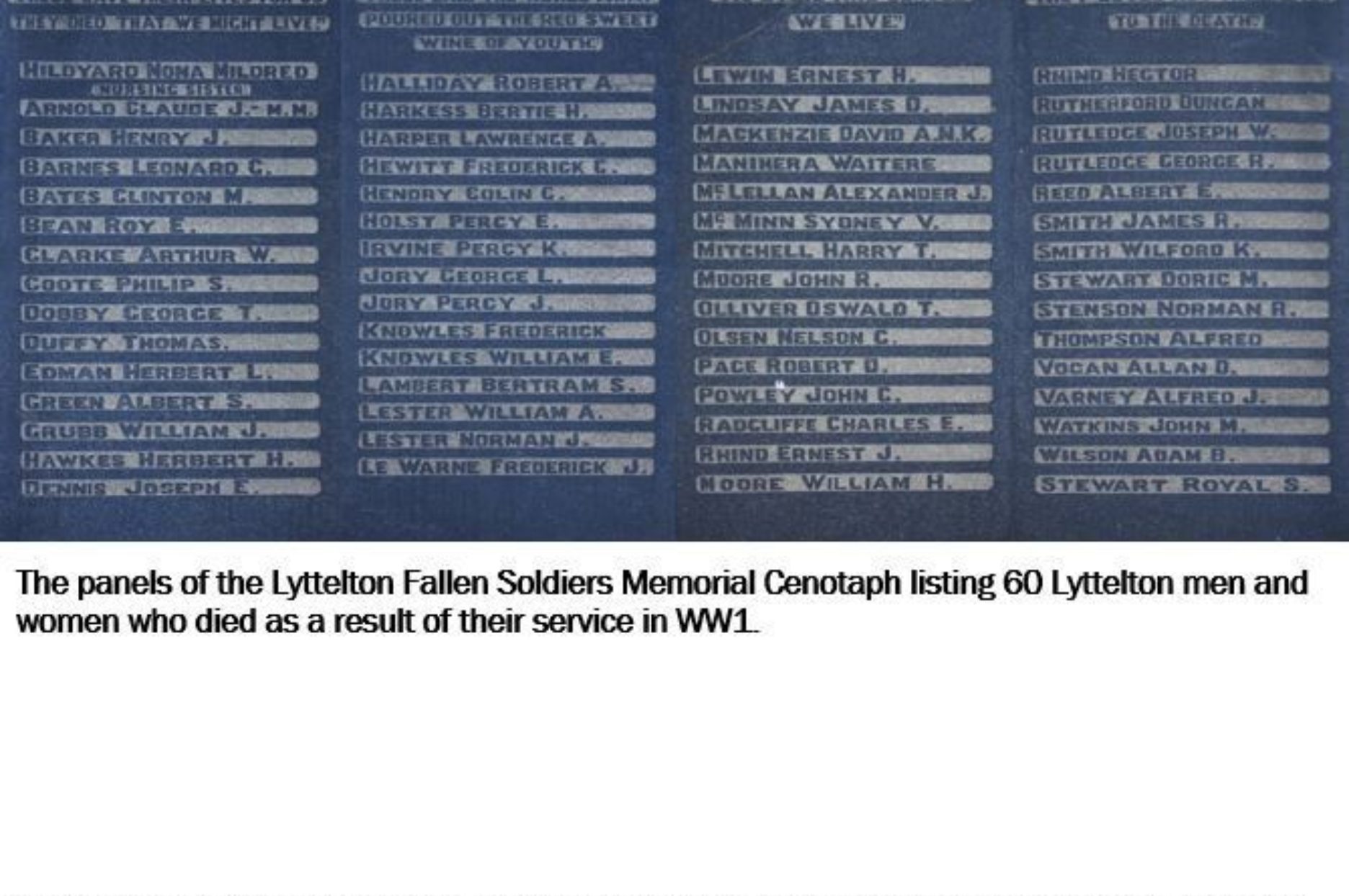PO Box 95
Lyttelton 8841
Te Ūaka recognises Te Hapū o Ngāti Wheke as Mana Whenua and Mana Moana for Te Whakaraupō / Lyttelton Harbour.
Service & Sacrifice: Lyttelton Stories From World War One
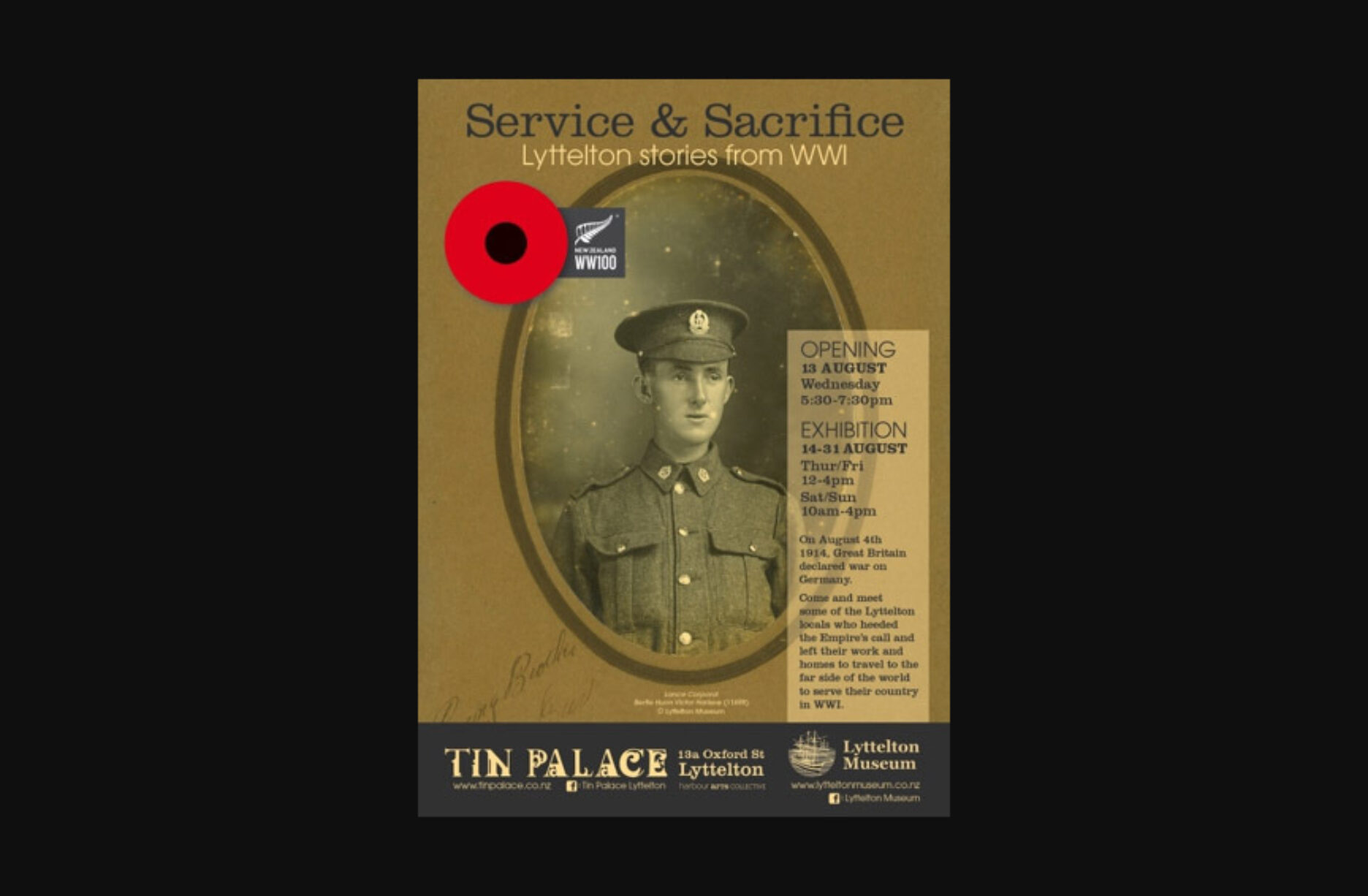
This exhibition contrasts the stories of Bertie Harkess, Nona Hildyard, and Walter Lester - three Lytteltonians who heeded the Empire’s call to fight in World War One.
Lyttelton stories from World War One
On 4th August 1914, Great Britain declared war on Germany and in response to the Empire’s call many men and women from Lyttelton left their homes and traveled to the far side of the world to serve their country. What may have initially seemed like an adventure, ended for some in the ultimate sacrifice, and for many others who served and survived it resulted in injury and illness both physical and mental.
This exhibition contrasts three different stories. Lance Corporal Bertie Huon Victor Harkess (Military Registration Number 11698), Sister Nona Mildred Hildyard (22/125), and Bombardier Walter David Lester (2/327) who all grew up in Lyttelton but encountered very different situations in WWI. As a nurse, Nona travelled to Egypt and the Aegean. Walter was with the Field Artillery in Gallipoli for the whole campaign before moving to France. And in the Infantry, Bertie was in France and Belgium on the Western Front through battles at the Somme, Messines, and Passchendaele.
The accompanying slideshow of images from Lyttelton Museum’s collection includes photographs and postcards of Lyttelton men in service at home in the Harbour, in the North Island in preparation to leave, and abroad. Through these stories and images we can catch a glimpse of what our servicemen and women experienced in WWI and begin to contemplate the sacrifices they made.

Walter David Lester, 1916, photographer unknown, Albumen print, 61 x 83 mm, Te Ūaka The Lyttelton Museum
Walter's Story
Bombardier Walter David Lester (2/327)
Walter was a painter in Lyttelton and already involved with the Artillery in the Harbour and in Christchurch before he enlisted at the outbreak of war and left with the main body of the Expeditionary Force.
Service and Sacrifice - Walter's Story
Bombardier Walter David Lester (2/327)
Walter was born on 13th August 1888, to Edward and Elizabeth Lester. He had numerous siblings including William Thomas, later an undertaker and painter, Lyttelton Borough Councillor, and three times Lyttelton Mayor. Walter worked for William as a painter before enlisting. Walter was a member of the Lyttelton Oddfellows, a friendly society. He also served in the Territorial Forces, firstly the Lyttelton Cadets, then the Naval Garrison Artillery, and as a Bombardier, in ‘E’ Battery of the New Zealand Field Artillery.
Egypt, Gallipoli and the Western Front
Walter enlisted on 19th August 1914 and after training embarked 16th October 1914 on the SS Limerick with the 2nd Battery of the Field Artillery Brigade in the main body of the Expeditionary Force. They arrived in Egypt on 4th December and settled into a training camp near Cairo.
The Mediterranean Expeditionary Force left Egypt on 12th April 1915 and arrived at Gallipoli on 25th April. It was two days before the 2nd Battery could land, drag their guns up to the plateau, and begin to support the infantry. They remained there for eight months, through the May and August offensives, ammunition shortages, poor diet and lack of water, summer flies and dysentery, winter storms and frostbite. Only six days before the order to evacuate the Batteries was given on 10th December, Walter became ill and was transferred to hospital in Mudros, Greece. By the end of the campaign over 120,000 men had died, including 2,779 from New Zealand and at least seven from Lyttelton.
In early April 1916 the New Zealand Division was stationed for a time at Armentieres in northern France where Walter was promoted to Bombardier. In late August the Division moved to support the British and French at the Somme. Just prior to the second offensive on 12th September 1916, a preliminary attack was undertaken to straighten the line at the Front. During this attack Walter was shot in the face. Seriously ill, with a broken jaw, he was sent to England three days later. In the offensive that followed over 2,000 New Zealanders were killed, including at least another seven from Lyttelton.
Hospital and Home
Walter was admitted to King George Hospital in London and stayed there for nine and a half months until he was transferred to No. 2 New Zealand General Hospital in Walton on Thames, near London. This hospital and the nearby Oatlands Park Hospital treated 27,000 patients before they closed after the end of the war.
Walter was declared unfit for service and released in January 1918. He arrived home on SS Maunganui on 19th March 1918 after being away for three and a half years. On his return, Walter worked again as a painter and in 1924 he married Jemima Dunbar Hill. They lived at 11 Hawkhurst Road in Lyttelton. Walter died on 28th May 1970.
Click here to see the exhibition panel for Walter Lester.
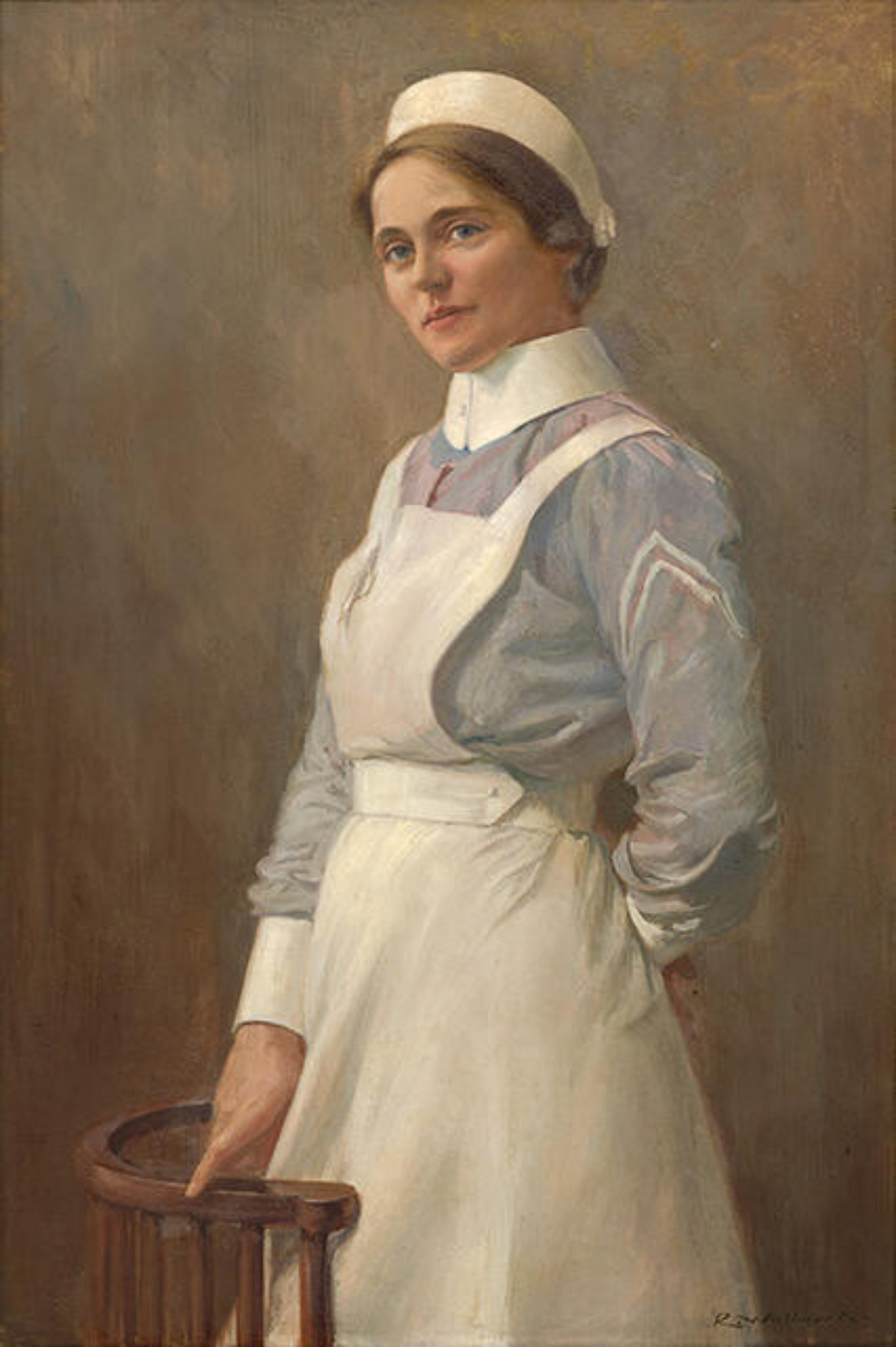
Lyttelton Nurse Nona Hilliard, c.1917, Richard Wallwork, 1882-1955, Oil on canvas, 870 x 1180mm, Photographed by John Collie, Christchurch Art Gallery collection 2009/044, Transferred from Banks Peninsula District Council, 2006
Nona's Story
Staff Nurse Nona Mildred Hildyard (22/125)
Nona was the first nurse from Lyttelton to enlist in the New Zealand Army Nursing Service and travel to join the troops in the northern hemisphere. However tragedy stuck the No. 1 New Zealand Stationary Hospital before it even arrived at its first deployment. Read more about what happened to Nona in the Aegean Sea.
Service and Sacrifice - Nona's Story
Staff Nurse Nona Mildred Hildyard (22/125)
Nona was born in Lyttelton on 4th November 1888. Her parents, William and Betsy Ann Hildyard, were originally from Tasmania. William was a boot maker with shops at 6-8 Canterbury Street in Lyttelton and on High Street in Christchurch and he was well known around town as a Freemason and Lyttelton Borough Councillor. Nona attended West Lyttelton School and Lyttelton District High School and was a popular member of the Lyttelton Ladies Swimming Club. Nona trained at Christchurch Hospital, before working as private nurse with the prominent Dr. A. C. Sandston in Christchurch and then at Nurse Turner’s Private Hospital in Woolston.
The Marquette Tragedy
In June 1915, Nona was selected along with 10 other Canterbury nurses to join the Army Nursing Service. She was the first nurse from Lyttelton to travel to the front in WWI. She embarked from Wellington for Egypt with 69 other New Zealand nurses on His Majesty’s New Zealand Hospital Ship No. 1, SS Maheno, on the 11th July arriving at Port Said on 18th August where the nurses joined the No. 1 New Zealand Stationary Hospital.
On 19th October, the Hospital boarded the troop ship H.M.T.S. Marquette and left Alexandria with 741 people on board including 36 New Zealand nurses and 94 hospital staff, along with 500 troops of the British 29th Divisional Ammunition Column, their ammunition, mules, and horses.
Four days later at 9:15am on 23rd October, only a few hours from their destination of Salonika (now Thessaloniki), the Marquette was torpedoed by the German submarine U-35. Lifeboat drills had been well rehearsed, however the evacuation quickly became chaotic due to the listing of the sinking ship. On the port side one lifeboat fell on another killing one nurse and injuring others. Nona was in a starboard side lifeboat when a rope snapped tipping some of the nurses into the water before an open iron door from the ship smashed into it. In the confusion four nurses were left on board the Marquette as she sank within 15 minutes.
The survivors clung to the boats, rafts, and debris in the water fighting cold and rough sea conditions for seven hours until help arrived to pick them up. During this time many, including Nona, succumbed to injuries and exhaustion and drowned. In total, 167 of the service people on the Marquette were lost. Ten New Zealand nurses died along with twenty-two New Zealand men.
A Memorial Portrait
In mid-1916, the citizens of Lyttelton undertook to create a memorial for Nona. Fundraising events included the Lyttelton Marine Band playing in the street on a Saturday evening, and Richard Wallwork was commissioned to paint Nona’s portrait. The portrait was presented by the people of Lyttelton to the Borough at the Council Chambers on 8th March 1917. It was unveiled by the Governor General’s wife before a large gathering of citizens and nurses. The portrait remained in Lyttelton until 2006 when it was transferred to the Christchurch Art Gallery.
Click here to see the exhibition panel for Nona Hildyard.

Bertie Huon Victor Harkess, 1916, George Henry James Hillsdon, 1852-1926, Silver gelatin print, 88 x 126 mm, Te Ūaka The Lyttelton Museum
Bertie’s Story
Lance Corporal Bertie Huon Victor Harkess (11698)
Bertie was only 19 years old when he enlisted in 1916. After growing up and working as a clerk in Lyttelton, he was obviously keen to join his fellow servicemen and women in the reinforcements to the Expeditionary Force. Find out more about Bertie and what happened to him in Europe.
Service and Sacrifice - Bertie’s story
Lance Corporal Bertie Huon Victor Harkess (11698)
Bertie was born in Lyttelton on 8th March 1897 to Thomas and Sibylla Harkess of 20 Reserve Terrace. Bertie attended Lyttelton District High School, and became a clerk, firstly for the Lyttelton Harbour Board, and then the National Mortgage and Agency Co. Ltd in Lyttelton. He was a keen footballer, a member of the Lyttelton Oddfellows Lodge, and a Territorial Forces Cadet. He was already serving in No. 4 Company Garrison Artillery when he enlisted in the Expeditionary Force on 13th January 1916.
Battle for Polderhoek Chateau
Posted to C Company of the Canterbury Infantry Battalion, Bertie trained at Featherston Camp before embarking on the SS Ulimaroa with the 12th Reinforcements on 1st May 1916 and arriving into Southampton, England in August. After a month in England Bertie was posted to the 13th Company, 1st Canterbury Battalion, and on 22nd September they were sent to the Somme in France to reinforce the Canterbury Infantry Regiment who had been fighting there since the 12th September.
Bertie’s Battalion moved to Belgium and was subsequently at the battle for Messines in early June 1917 and then the third battle of Ypres (or Passchendaele). Bertie was promoted to Lance Corporal on 12th October, the day of the New Zealanders’ attack on Bellevue Spur. Weeks of adverse weather had turned the front into a quagmire. As a result, the artillery failed to clear the German defences and machine guns, even falling short and shelling New Zealand troops, and the attack was a colossal failure. On this day, nearly 850 New Zealand men including at least four from Lyttelton were killed or lay dying in the mud of no man’s land.
Throughout his time in the field, Bertie was in and out of hospital suffering from various illnesses. After the battle of Passchendaele, Bertie had two weeks leave in England and then a stint at Brigade School before re-joining his Battalion on 5th December during the attack on Polderhoek Chateau. This battle also failed due to inexperienced troops, lack of training, terrible weather, and the Batteries again inadvertently shelling their own lines.
Bertie was killed on that same day. He was standing in a trench when a shell landed right next to him. Bertie’s death was confirmed at a hearing in January 1918, as a fellow soldier had identified Bertie’s body by the leather jacket he was wearing.
Lyttelton Cenotaph
Bertie’s body was never recovered and buried, however he is listed on the New Zealand Memorial in the Buttes New British Cemetery at Polygon Wood in Belgium, on his family headstone in the Lyttelton Anglican Cemetery in Canterbury Street, and amongst the 60 names on the Lyttelton Cenotaph.
The Lyttelton Fallen Soldiers Memorial Cenotaph, originally on Oxford Street at the corner of London Street, was unveiled by the Governor General Lord Jellicoe at the 1923 Anzac Day ceremony in front of approximately 2,000 Lyttelton residents including about 120
Click here to see the exhibition panel for Bertie Harkess.

